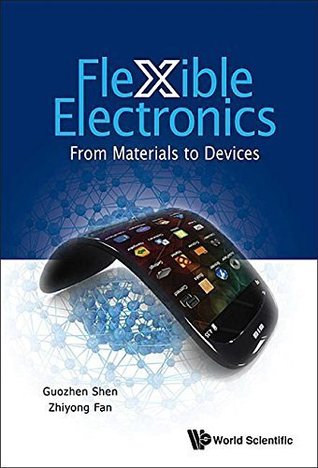Download Flexible Electronics: From Materials to Devices - Guozhen Shen file in ePub
Related searches:
Oct 9, 2020 these range from integrating off-the-shelf electronic devices on flexible printed circuit boards to printing functional inks and materials to realise.
This book provides a comprehensive overview of the recent development of flexible electronics. This is a fast evolving research field and tremendous progress has been made in the past decade. In this book, new material development and novel flexible device, circuit design, fabrication and characterizations will be introduced.
The development of organic and polymeric materials for flexible electronics is progressing at a rapid rate with organic semiconductor materials producing.
With the recently well developed areas of internet of thing, consumer wearable gadgets and artificial intelligence, flexible and stretchable electronic devices.
Read flexible electronics: from materials to devices by available from rakuten kobo. This book provides a comprehensive overview of the recent development of flexible electronics.
Flexible electronics or flex circuitry are technologies that uses flexible plastic materials for electronic circuit manufacturing. Circuits that are built using flexible electronics use standard components such as transistors and resistors, but can be molded to a specific shape. This method allows very compact and rugged devices to be created.
Flexible electronics: materials and applications surveys the materials systems and processes that are used to fabricate devices that can be employed in a wide.
The development of flexible electronic circuits is essential in all such applications. This chapter provides a general overview of materials and technologies for flexible thin-film transistors. The focus is on devices and circuits that are fabricated directly on polyimide foils and based on amorphous indium gallium zinc oxide (a-igzo) and high-k dielectrics.
Flexible electronics: from materials to devices [shen, guozhen� fan, zhiyong] on amazon.
Flexible electronics, also known as flex circuits, is a technology for assembling electronic circuits by mounting electronic devices on flexible plastic substrates, such as polyimide, peek or transparent conductive polyester film. Additionally, flex circuits can be screen printed silver circuits on polyester.
Flexible electronics� from materials to devices by zhiyong fan and guozhen shen (2016, hardcover) the lowest-priced brand-new, unused, unopened, undamaged item in its original packaging (where packaging is applicable).
Route to flexible electronics made from exotic materials: cost-effective method produces semiconducting films from materials that outperform silicon.
2d carbon-based materials including nanotubes and graphene have demonstrated excellent properties such as ultrahigh.
The internet of things (iot) has a broad vision of connecting every single object in the world to form one network.
Printed and flexible electronics spans a vast array of applications, ranging from oled displays to electronic skin patches.
Also, this work will serve as a strong reference for those graduate students or researchers who are new to the discipline of flexible electronics. Choice connect overall, the work is written at a level suitable for any individual with a reasonable familiarity of device physics and materials science.
Organic semiconductors and polymers are most widely used materials for flexible electronics and stretchable electronics.
Particularly, recent progress of nanomaterials, including carbon nanotubes, graphene, semiconductor nanowires, nanofibers, for flexible electronic applications,.
Recently, 2d materials have been intensively studied as emerging materials for future electronics, including flexible electronics, photonics, and electrochemical.
Interests: polymer microsystems technologies; electronics packaging and advances in stretchable and flexible electronic materials and devices will inspire.

Post Your Comments: